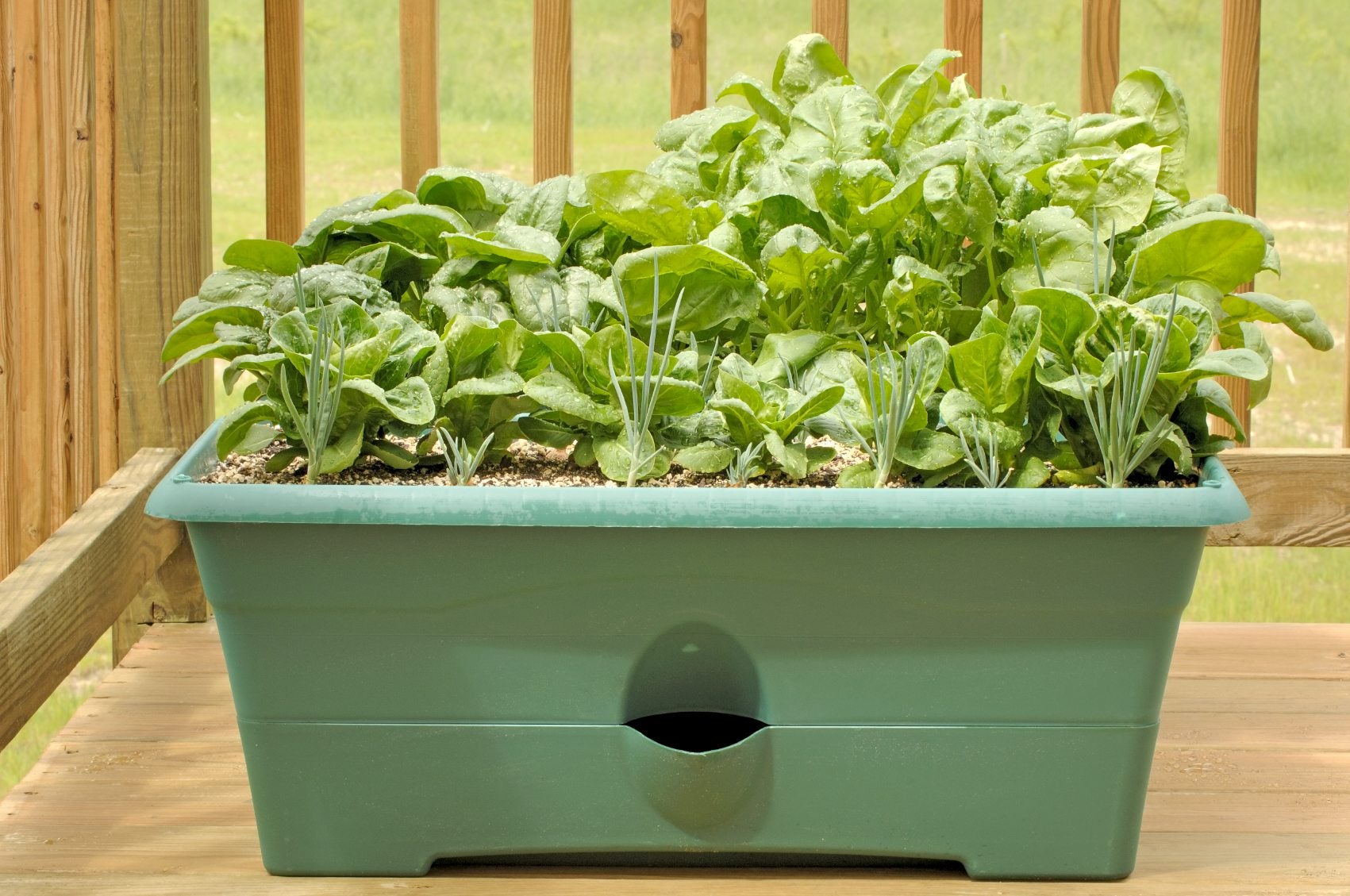
How To Grow Spinach In Pots For Fresh Greens Anywhere
Growing a veggie garden is more popular than ever, but what if you don’t have a foot of garden space to call your own?
Even those without access to an outside garden plot can grow a variety of vegetables via container gardening. Some of the easiest and best to grow are greens, particularly spinach in containers. I’ve been in this very situation myself and can attest that growing spinach in pots is so easy the kids can do it. Keep reading while I tell you how to grow spinach in pots.
Can You Grow Spinach in a Pot?
Yes, you can grow spinach as well as many other types of greens in containers. The beauty of spinach is its versatility. It can be eaten fresh or cooked and canned or frozen. Plus, if you time it right, you can plant successive plantings or even multiple crops.
How to Grow Spinach in Pots
Like all crops, spinach requires specific light, water, soil, and temperature to grow. Spinach is a cool weather crop best to plant in the spring or fall but you can also grow it in containers indoors, effectively extending your harvest season. Easy to grow and fast to mature, spinach is the perfect crop for a container garden.
- Light Spinach should be grown in an area of full sun; at least 6-8 hours per day. That said, since spinach is a cool weather plant, the heat of high summer will cause it to struggle and bolt so when planting outdoors, plant April through May and August to September. Another benefit of growing spinach in pots is that you can move them around, ensuring plenty of light but not the burning rays of the sun.
- Water Spinach likes to be consistently moist but not sodden. Push your fingers into the soil to test for dryness. If the soil is dry, water well, allowing the excess to flow from the drainage holes of the pot. Water at the base of the plant to prevent fungal diseases. Mulching around the plants can also help to retain moisture, especially in pots which dry faster than plants in the ground.
- Temperature & Humidity Spinach is very sensitive to temperature. Too hot and the plant will bolt or the leaves burn, too cold and seeds will not germinate. Seeds germinate best in soil temps of 45-65 F (7-18 C). If your containers are outside, spinach can withstand frost but will need protection from temps over 80 F. Humidity is largely not an issue for spinach.
- Soil Use a nutrient-rich soilless potting mix or make your own well-draining mix with organic compost.
- Fertilizer If your soil has plenty of compost, your spinach may not need fertilization. Otherwise, use a liquid or time-release fertilizer that is rich in nitrogen. Be careful when applying time-release foods since spinach has delicate surface roots.
- Problems, Pests & Diseases Spinach grown indoors in pots rarely has an issue with pests. Outside, various soft-bodied insects may nibble on the tender leaves. They can be combated with insecticidal soap or BT dust or spray. Properly timed fungicides can reduce the incidence of fungal diseases as can proper watering. Water at the base of the plant, not at the leaves, and don’t leave the soil sodden, just moist.
How to Plant Spinach in Pots
Select your container. It should have adequate drainage holes and be of a size sufficient to contain the number of plants you wish to grow. For reference, spinach needs at least 4-6 inches (10-15 cm) of space per plant.
If planting outside, spinach should be planted 4-6 weeks before the average last frost date for your area in the spring and 6-8 weeks prior to the first frost date in the fall.
Sow seeds about ½ inch below the soil’s surface. Gently water the seeds in and keep the soil moist. Seeds should germinate in about 5-14 days. When the seedlings have their first set of true leaves, thin the crop.
Sign up for the Gardening Know How newsletter today and receive a free copy of our e-book "How to Grow Delicious Tomatoes".
Spinach leaves can be picked when small or wait until they are more mature; about 37-50 days from germination.
Pruning
Spinach does not need pruning per se but it can be harvested so it keeps growing which is somewhat similar. To harvest your spinach so it keeps on growing, simply use scissors or pruning snips to remove exterior leaves close to the base of the plant.
Leave ½ inch of stem above the soil’s surface after removing the stem to regrow. Never harvest more than 25-30% of the leaves off the plant. You want to leave it enough leaves to photosynthesize and continue to produce.
Propagation
Spinach is most commonly propagated through seeds. Always read the labels on seed packages, and follow the simple basic steps for germinating seeds.
Repotting
There is likely no need to repot your spinach plants as long as you give them containers that were large enough to accommodate their growth. Also, spinach does have shallow roots that dislike being dislodged and thus does not do well with transplantation.
Overwintering
Spinach likes moist, not sodden soil. If you feel you have overwatered your plants, now is the only time to repot them. Remove them from the drenched soil and repot them in new soil.
Best Spinach Varieties for Pots
Because spinach isn’t a large plant, most varieties will work well for container growing. Some options, however, are America, Bloomsdale, Double Choice, or Viroflay.
FREQUENTLY ASKED QUESTIONS
- Does Spinach Grow Well in Containers? Spinach does very well as a container-grown crop. It is low maintenance with a fairly quick harvest date. It can be harvested all at once or “cut and come again” to extend your harvest. It can also be planted more than once in a season and takes little space.
- Can You Grow Spinach in a 5-gallon Bucket? You can grow spinach in a 5-gallon bucket but there really isn’t a need to. Spinach has shallow roots that won’t go to the bottom of the bucket. A shallow container might be better; 6-8 inches ( 15-20 cm). That said, you can incorporate spinach into a mini 5-gallon garden along with a tomato or pepper plant, some carrots, and onion for example.

Amy Grant has been gardening for 30 years and writing for 15. A professional chef and caterer, Amy's area of expertise is culinary gardening.
